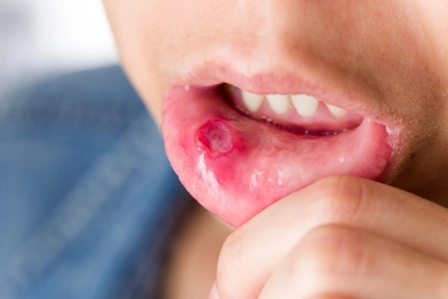
When your clinician diagnoses radicular cyst, your reporting of the diagnosis in ICD-10 is very similar to the manner in which you report it using ICD-9 codes. The inclusion and exclusion lists are also similar to what you had in ICD-9 coding system. You should also be aware of the other terms which your clinician is likely to use instead of “radicular cyst.”
ICD-9: When your oral surgeon diagnoses a patient with radicular cyst, you will have to report it with the ICD-9 code, 522.8 (Radicular cyst). You will have to report the same ICD-9 code if your clinician diagnoses the patient with apical periodontal cyst. You report the same diagnosis code also for other diagnosis terms such as periapical cyst, radiculodental cyst or residual radicular cyst.
Caveat: If your clinician diagnoses the patient with lateral periodontal cyst or lateral developmental cyst, you cannot choose to report it with 522.8. You have a separate ICD-9 code to report this. You report the condition with the ICD-9 code, 526.0 (Developmental odontogenic cysts).
ICD-10: When you switch to using ICD-10 codes post Oct.1, 2015, you will have to report a diagnosis of radicular cyst with the ICD-10 code, K04.8 (Radicular cyst). Like in ICD-9 codes, you will have to use the same diagnosis code, K04.8, when your clinician diagnoses the patient with apical periodontal cyst. You also use K04.8 when your clinician mentions the diagnosis as periapical cyst or residual radicular cyst.
Again as in ICD-9 codes, you will not use K04.8 to report a diagnosis of lateral periodontal cyst. This has to be reported with K09.0 (Developmental odontogenic cysts) instead of K04.8.
Focus on These Basics Briefly
Documentation spotlight: A few of the common findings that your clinician will record when he arrives at a diagnosis of radicular cyst will include the presence of non-vital teeth. In many cases, your surgeon will find the presence of the cyst in a radiograph incidentally as there might be no symptoms of pain or swelling present especially when the lesion is small. When the lesion grows in size, the patient might feel the symptoms of pain and in some cases, there may be a swelling present in the affected area.
When a large lesion is present, your clinician might observe the presence of a swelling that might be bony hard or fluctuating depending on the size of the cyst and the erosion of the surrounding bone. Your clinician might also note expansion of the buccal and palatal plates if the lesion is in the maxilla or might note buccal plate expansion in lower lesions. Your clinician will also note that the associated tooth or teeth are non-vital.
Tests: When your clinician suspects the diagnosis of an apical periodontal cyst, he will order imaging studies. An intraoral apical radiograph of the affected tooth might show the presence of the cyst as an ovoid radiolucent area present at the apex of the affected non-vital tooth. Sometimes, your clinician will find the presence of asymptomatic radicular cyst(s) incidentally on a radiograph. It is not uncommon for your clinician to note the presence of more than one cyst affecting multiple teeth in the same patient.
In most cases, management of the cystic lesion involves endodontic treatment of the affected tooth or teeth and then waiting for the lesion to resolve on its own. If the lesion fails to resolve or if the patient continues to experience pain, discomfort or signs and symptoms of infection or swelling even after the endodontic treatment has been performed, then your surgeon might prefer to complete extract the tooth and curette the area where the cyst is present. On the other hand, he might try an apicoectomy with enucleation or marsupialization of the cyst.
Example: Your clinician reviews a 27-year-old male patient with symptoms of pain and discomfort in the lower anterior teeth for a period of a week. The patient complains that the pain had been slowly increasing and it had reached a peak in the past day or so. The patient says that he had had a fall from his bike about seven years ago and had hurt his lower jaw and his lower anterior teeth had become slightly mobile then but it had stabilized by itself after about a month from the incident. He said that he had no pain or any other symptoms in these teeth except for increasing discoloration of the lower anterior teeth till date until the pain had set in.
Upon examination, your clinician observes the presence of discoloration of the lower anterior teeth and presence of slightly swelling in the area of the affected teeth. He noticed tenderness on percussion of the affected teeth and also slight mobility of all the anterior teeth. He noted that there were no calculus deposits of note in the affected area.
He ordered for an OPG x-ray and noticed multiple radiolucent areas around all the lower anterior teeth. Based on history, signs and symptoms, and results of imaging studies, your clinician arrived at a diagnosis of radicular cysts. He performed endodontic treatment for the affected teeth. The patient was asked to return for a follow up (with repeat x-rays at that later date) to check for the resolution of the cystic lesions.
What to report: If you are reporting with ICD-9 codes, you will have to report the diagnosis with 522.8. You will have to report K04.8 if you are using ICD-10 codes.
